The age-old Thames cockle fishery achieved 21st-century endorsement with the award of Marine Stewardship Council accreditation in early December. John Worrall reports
Cockles have been the main fishery in the Thames estuary since at least the early 1800s. Back then, they were hand-raked from the sands between tides throughout the year, and carried up the beach by men with yokes bearing two baskets. That was still happening into the 20th century. By then, cockles were a feature of many a boat-borne Londoner’s day out to Southend.
And if the tripper boats no longer come paddling down – “Fings ain’t…”, etc – things have also changed in other respects, because while the cockles are still very much there, the harvesting has evolved from low-tide, back-aching hand-raking to high-tide suction-dredging by boats which each pick up 11t per day with the minimum of fuss and human exertion. And while day-trippers, mostly car-borne these days, can still find a pot of them to top off their day, much of the catch goes to Europe, particularly Spain.
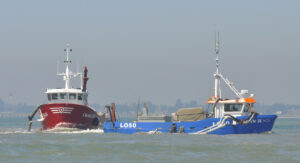
A few hours’ dredging over the top of the tide…
Dredging began in the 1980s, and was so efficient that it soon put pressure on stocks and prompted regulation, which came in the form of the 30-year Thames Estuary Cockle Fishery Order 1994 (TECFO) to stabilise matters.
The Thames cockle grounds are extensive, fanning out to embrace the Blackwater estuary to the north and the Kent foreshore to the south, although the outer reaches of those flanking fringes form the ‘permitted fishery’, as opposed to the wedged-shaped ‘licensed fishery’ which covers the larger part of the estuary.
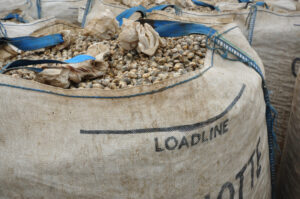
… is enough to bag the 11t daily allowance of Thames cockles.
The permitted fishery is a bit of a sideshow. It used to open regularly, and was an important second option for boats from other parts of the east coast, but in many years this century it has remained closed, and in those years when it has opened, it has done so with a very small total allowable catch. In each of the last three seasons, the TAC was sufficient only for one trip for 11t per boat per season for the 30-odd boats that applied. That might not seem much, particularly for those boats that have to steam for 12 or 15 hours down from the Wash, where they will have had to fit dredge gear (the Wash cockle fishery reverted to hand-working more than a decade ago), having first passed an inspection to ensure that the boat was clean and not carrying infection – all for 11t of cockles. But it’s all about track record, because that could be important over the next few years.
The licensed fishery is the main event, and it is this fishery which is governed by the TECFO. It has been worked by the same 14 licence holders almost since regulation began, a handful of them based in Kent, but the majority at Leigh-on-Sea next to Southend. Leigh has a channel that ebbs to a dribble, and probably only remains viable at all because cockle boats churn in and out on the top of the tide to land catches. During the season, and between trips, some Leigh boats lie further out in the estuary for more flexibility, their crews going back and forth in small RIBs which don’t need more than a dribble.
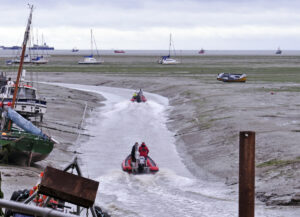
A majority of Thames cockle boats work from Leigh-on-Sea, which has a narrow channel…
And from the outset, the licensed fishery has been a cushy number for those 14 boats, because the efficiency of suction-dredging has meant that instead of year-round work for many, the TAC is picked up by crews of two over a season that runs only for about four months, in summer and early autumn, and has a fixed beginning and end, with three or four landings per week.
The working week is usually defined as running from 9pm on Sunday to 12pm on Friday, with the maximum daily landing being 13.6m³, approximately equivalent to 11t. Some boats load loose into their holds, while others load into one-tonne bags for onward transport.
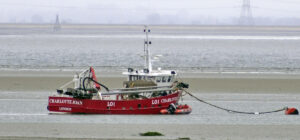
… so some moor in the estuary and connect by RIB.
The 2019 season was, as usual, divided into sections, with three landings per week permitted during the first six weeks, with the intention that four landings per week would be allowed during the four weeks from 28 July – when meat yields and quality were expected to be at their best – before the pattern reverted to three weekly landings during the final six weeks from 25 August.
In the event, growth rates and therefore meat content weren’t as good as expected, and the start of four landings per week was moved from 28 July to 2 September.
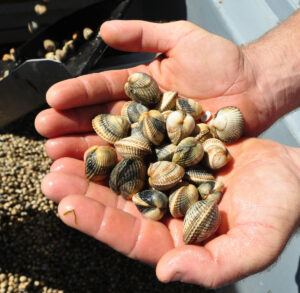
Thames cockles Cerastoderma edule.
The TAC of 8,008t – well above average, and 1,540t more than was landed in 2018 – was set by the Kent and Essex IFCA following the standard procedure of a spring stock survey followed by the division of the estimated adult stock into thirds – a third each for the birds and regeneration, leaving a third for the industry. High TAC and low growth rates apart, 2019 was therefore a fairly standard season.
But the ongoing complaint from outsiders has always been the limiting of the fishery to just those 14 boats, which each yield a very high return for just a few months’ work a year, and can lay up for the rest.
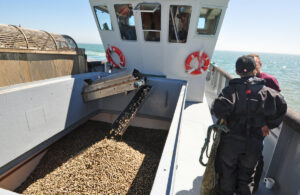
Boats processing locally load in bulk to the hold…
The reason is rooted in that governing ordinance, the TECFO. When it came into force in 1994, there was a view within the then Sea Fisheries Committee that under this new regulation, local cockle-fishing families needed to have their traditional livelihoods protected against any free-for-all caused by boats coming in from other areas. So the licensing scheme was introduced, and although there was initially a proposal to make licences the property of the committee, it was decided that continuity would be best achieved by fishing families forming limited companies to which the licences would be granted.
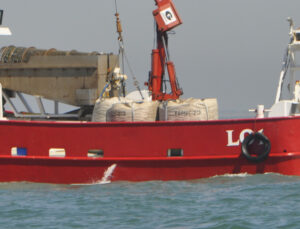
… but some cockles travel to Wash processors, and are loaded into bags.
And crucially, the TECFO explicitly provided that although cockle licences must be applied for annually, any applicant who had held a licence at any time during the preceding 24 months was entitled to automatic renewal on the same boat or another of similar size, capacity and fishing power.
Initially, 12 licences were granted, and then two more were granted on a ‘temporary’ basis. But when the committee tried to rescind the two temporary licences, the issue went to court, where it was decided that there was no such thing as a temporary licence – it was either a licence or it wasn’t – and so those two became entitled to automatic renewal along with the others. The number therefore settled at 14, at which it has remained, despite regular applications from others – there were nine written applications this year, the usual sort of number – which have always been turned down.
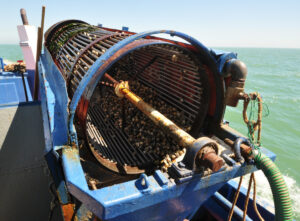
Riddle bars are set to the 16mm minimum landing size.
The net effect of all that is a ratchet system whereby a licence, once granted, cannot be rescinded, and each new licence could dilute – or would have diluted – the prospects of local cockling families, whose interests the licensing system sought to protect.
However, the attempt to keep the Thames cockle effort in local hands backfired, because limited companies, unlike families, can be sold, and a majority are now owned or controlled by outside interests. Meanwhile, other fishermen continue to apply despite continued refusal because, with the TECFO due to expire in 2024, consideration will soon be given to what happens thereafter. And that will probably include the granting of more licences, at which point, indications of sustained interest through previous (refused) applications, together with track record in the permitted fishery, might well decide the pecking order among new applicants.
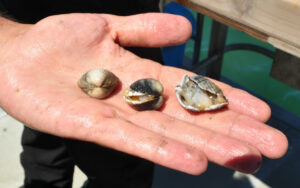
If breakages are more than 10%, the gear has to be adjusted or the boat stops fishing.
But there are anyway already signs of impending change. The possibility of granting more licences was actually mentioned in the papers for the Kent and Essex IFCA quarterly meeting in May 2019: ‘now would seem to be a sensible and pragmatic time for the authority to review the number of licences issued’ – although by then, it was close to the opening of the 2019 fishery and nothing further was done at that stage. But more licences are looking more likely.
Interestingly, the 179-page final MSC certification report by assessors Lloyd’s Register makes nearly two dozen references to the fact that the fishery has been limited to just those 14 boats. But it does also note, in paragraph 3.4.2, that ‘if more than 14 licences were issued, the number of cockles taken would not increase’, which presumably means that the granting of further licences would not affect MSC accreditation.
Either way, the fishery continues to flourish, and has now got the MSC big tick. The common bivalve Cerastoderma edule continues to find the shallow waters to its liking, and it multiplies by the thousands of tonnes, to the delight of birds, fishermen, day-trippers and Spaniards. Dredges feed riddles set to the minimum landing size of 16mm, and IFCA boarding parties police breakage rates which, if they exceed 10%, bring a direction to adjust gear or stop fishing. And all of that happens these days within a European Marine Site with Habitats Directive protection and the close monitoring by Natural England and attendant NGOs which goes with it.
All of this is reflected in the MSC accreditation, which came at the end of a process that began in March 2018, and has been carried through with EMFF funding sourced through the North Thames FLAG. On 3 December, the certification was presented to members of the industry at a lunchtime event, which fittingly took place at The Sands restaurant on Southend’s Western Esplanade looking out over the cockle sands, with winter sunshine flooding in.
And at that time of year, the cocklers, not otherwise engaged, were able to attend.








